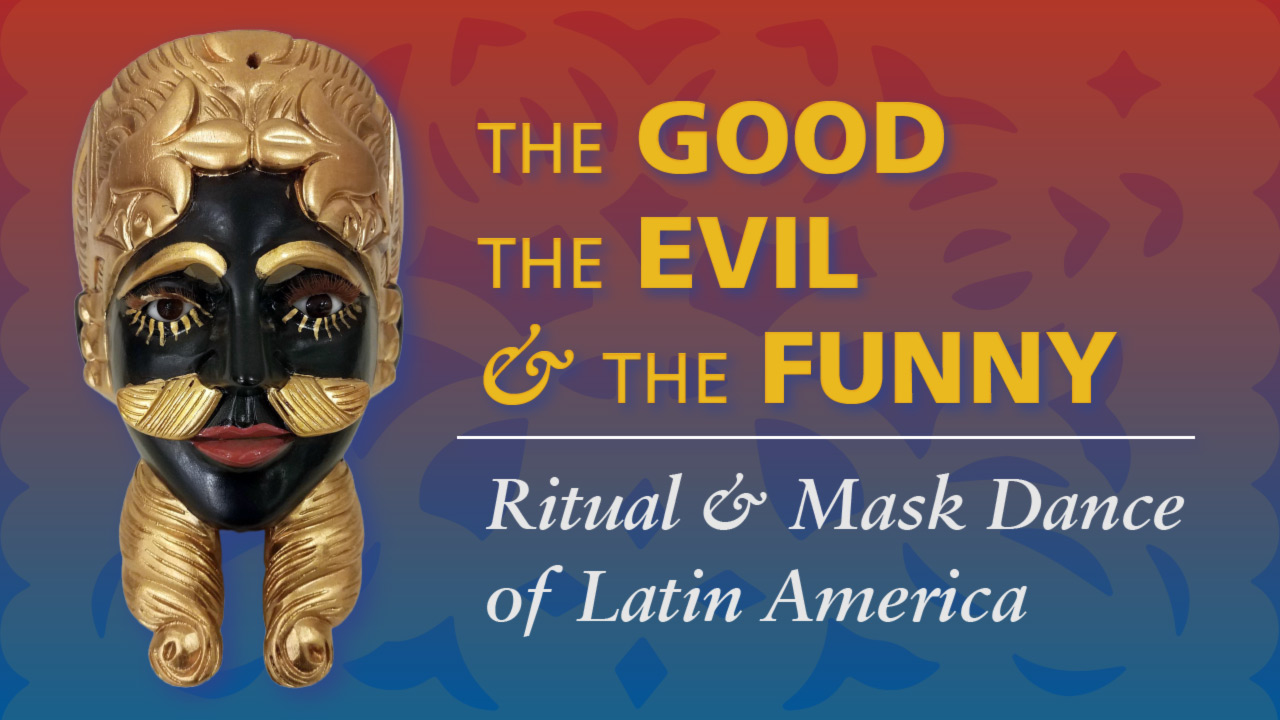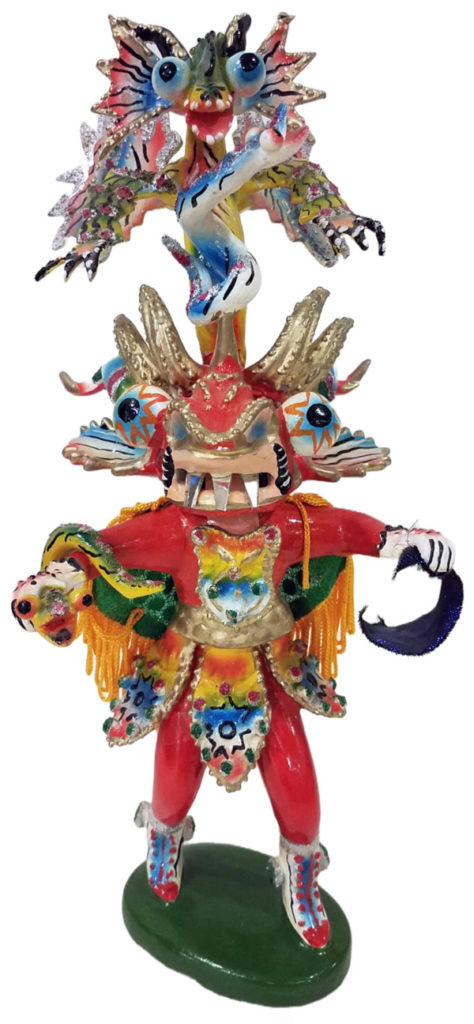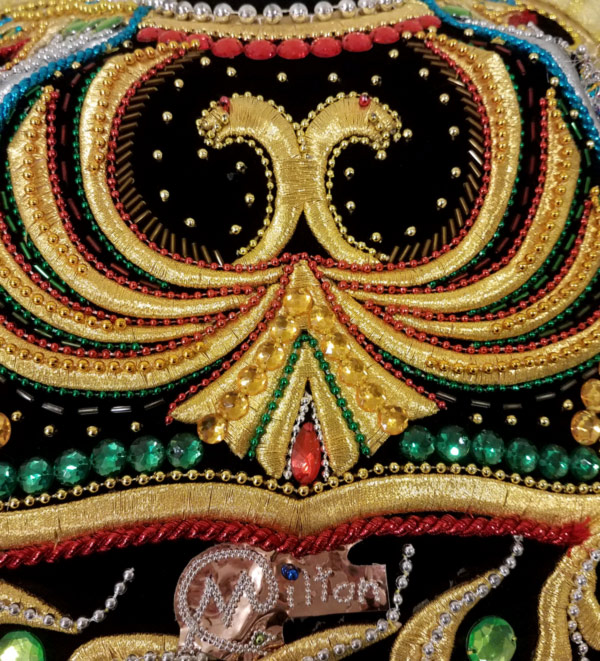
The Good, the Evil, and the Funny:
Ritual & Mask Dance of Latin America
in the Down Jersey Folklife Center
April 1 through December 31, 2023


This exhibition provides a comparative perspective of ritual and celebratory use of masks, their costumes, and dances, as well as an interpretation of symbolism and aesthetics associated with the cultural heritage of the Latin American communities in our region. The artworks on display visualize stories, legends, and beliefs. Therefore, their complex meanings can be truly understood only if viewed in a cultural context – as an integral part of living traditions in the respective countries of origin and in the United States. Carnivals, patron saints’ days, and other celebrations in Mexico, Guatemala, Panama, Colombia, Honduras, Bolivia, and Peru create both ritual and festive contexts for the stories narrated by the mask dances. The context of their performances in the United States is different, and often a secondary narration is needed to relate their meanings to audiences of multiple cultural backgrounds. Presenting artworks in a cultural context informs both the content and the design of the exhibition.
The ritual masks of human heroes and villains, gods, angels and demons, animals and mythical creatures provide the Latin American communities with metaphorical means of visualizing the transcendent and the belief in a magical transformation by which humans can define elements of chaos and reconfirm order – the Good wins the battle with the Evil. Other masks are created to be funny and used to narrate everyday stories. Most displays of the exhibition are organized by mask dances. Many include more than one dance character, such as the Mexican “Dance of the Jaguar,” the Guatemalan “Deer Dance,” the Bolivian “Dance of the Devils,” the Honduran “Dance of the Hawk,” and the Peruvian “Chonguinada Dance.” Others are represented by one of the main dance characters, such as the Panamanian “Devil Tun Tun” and the “Dirty Devil,” the Guatemalan “Conquistador” and “Bull,” the Bolivian “Wise Man” and “Pepino,” and the Peruvian “Huacón” and “Jija Huanca.” Some are featured in miniature works that have their own ritual meanings. Specific other artworks are also selected to showcase the artistic evolution of technique, color, and materials, as is evident in the masks created by the internationally known artists Gustavo Boada from Peru and Rafael Jiménez from Mexico.
The exhibit stories and displays were developed in partnership with “Raíces Culturales Latinoamericanas” and the following dance groups: the Mexican “Danza Tecuanis,” “GRUFOLPAWA” Panamanian dance, “Diablada Boliviana” dance group, “Ayelén Colombian Dance” group, “Raíces Hondureñas”; in addition to local private collectors, organizations, and artists, in the hope of encouraging dialogue and reflection in the exhibit space.
The Good, the Evil, and the Funny: Ritual & Mask Dance of Latin America is part of “Reflections & Expressions: Communities & Cultures of Central & South America,” a project of the New Jersey State Council on the Arts and WheatonArts.


